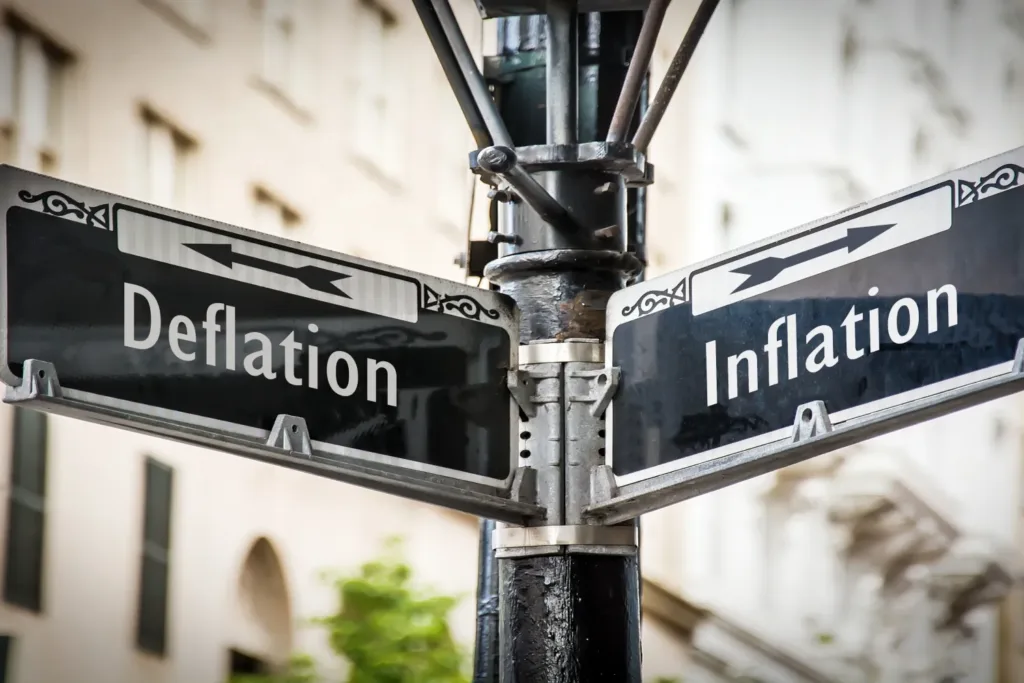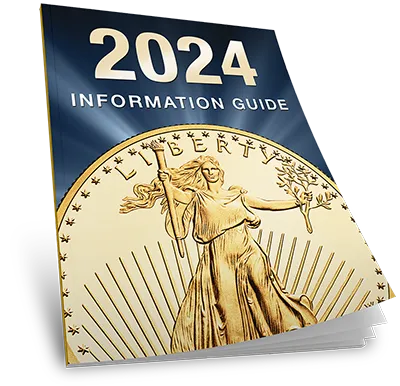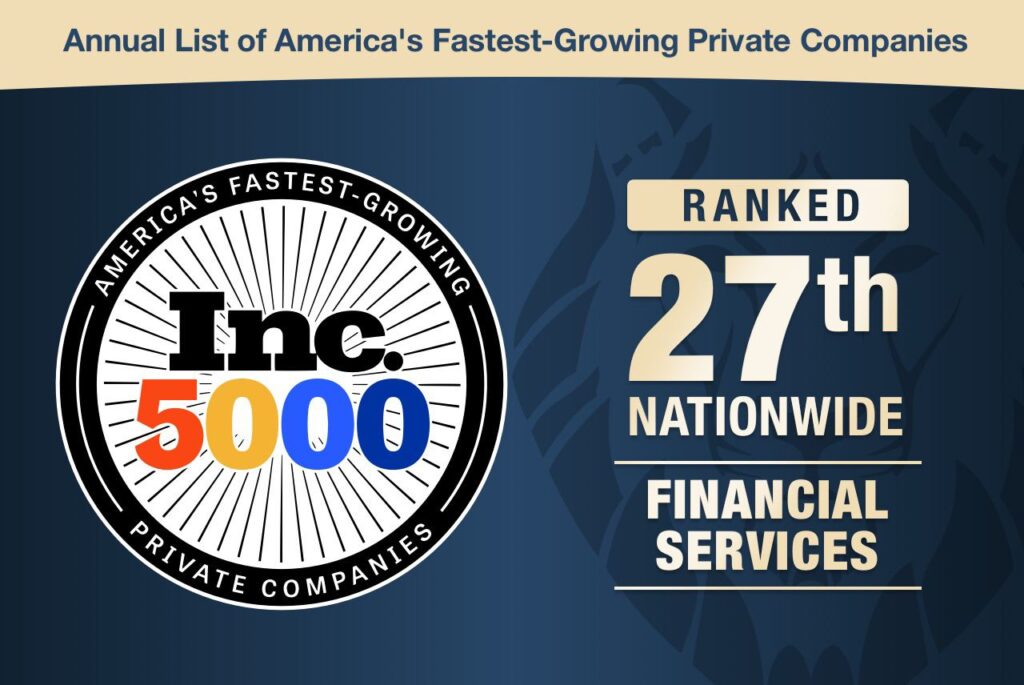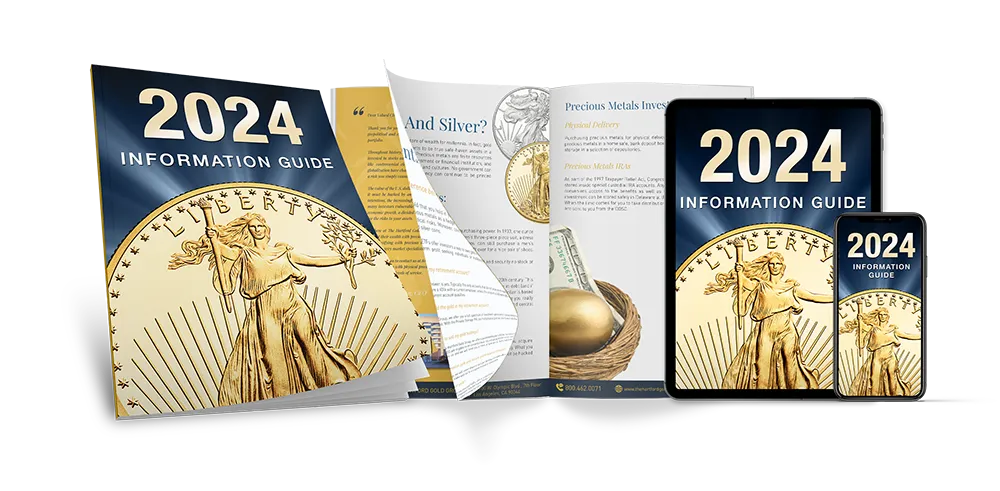Understanding the dynamics between inflation and deflation is essential for anyone interested in the economy, personal finance, or investing. These two phenomena represent opposite ends of the economic spectrum concerning the general price levels of goods and services over time.
Inflation, a term familiar to most, is when prices rise, decreasing the purchasing power of money. It’s often a sign of a growing economy but can lead to reduced consumer buying power.
On the other hand, deflation occurs when prices fall, potentially increasing the value of money but often indicating economic troubles, such as reduced consumer demand or increased unemployment.
The Federal Reserve and other central banks closely monitor these trends to implement monetary policy that aims to maintain stability. While inflation can erode savings and increase living costs, deflation can lead to a deflationary spiral, where falling prices lead to layoffs and further reduced consumer spending.
Both states affect everything from the stock market to personal finance decisions, making it vital to understand their causes, effects, and how to navigate through each. This article will explore the differences between inflation and deflation, their economic impacts, and what they mean for consumers and investors.
What Is Inflation?
Inflation represents the rate at which the general prices for goods and services rise while eroding purchasing power. It’s a natural phenomenon in growing economies. It is reflected in the Consumer Price Index (CPI), which tracks the average price change over time of a basket of goods and services (or the inflation rate).
Historically, periods of high inflation have various causes, including wars, economic booms, or supply chain disruptions. For instance, the 1970s saw significant inflation in the United States due to oil price shocks and fiscal policies. This led to decreased consumer purchasing power, which called for wage increases to keep pace with rising costs.
Inflation indicates economic activity but can lead to challenges such as reduced savings value and increased living costs. Central banks, like the Federal Reserve in the U.S., actively manage inflation through monetary policy, adjusting interest rates to keep the rate of inflation at a target level, usually around two to three percent annually.
High inflation, or hyperinflation, can destabilize economies, as seen in post-World War I Germany or, more recently, in Zimbabwe, where the rapid price increase led to a loss of confidence in the currency.
For the economy, moderate inflation is essential for growth, encouraging spending and investment; however, keeping it within bounds is important for maintaining economic stability.
What Are the Causes of Inflation?
Inflation can happen for several reasons, all impacting how much things cost.
Here are five common causes:
- Demand-Pull: Imagine everyone has more money, but there is still the same amount of goods to buy. Since everyone can spend more, the store might raise prices. This is called “demand-pull” inflation and happens when people’s demand for goods increases, but the supply doesn’t.
- Cost-Push: If the cost to make things, like wages or materials, goes up, companies might charge more for their products. This “cost-push” inflation can happen when oil prices jump, making everything from transportation to production more expensive.
- Printing More Money: Sometimes, the government makes borrowing money cheaper or puts more money into the economy through printing. They may do this in hopes to encourage spending and investment. Printing too much can lead to more dollars chasing the same amount of goods, pushing prices up.
- False Expectations: If people think prices will go up, they might spend more now or ask for higher wages, increasing prices. It’s like a self-fulfilling prophecy.
- Global Events: Big world events, like a pandemic or conflict in oil-producing regions, can disrupt supply chains or change demand, leading to inflation. For example, some things got more expensive during the pandemic because making and shipping them was harder.
Understanding these causes helps economists and policymakers keep inflation manageable so things don’t get too expensive too fast.
What Is Deflation?
Deflation is the opposite of inflation. It’s when the prices of goods and services decrease over time. While lower prices might sound good, a period of deflation can signal economic trouble.
Historically, deflation has been linked to periods of economic downturn, like the Great Depression in the 1930s. During deflation, because things are getting cheaper, people might wait to buy, hoping prices drop even more. This waiting game can lead to less spending, hurting businesses and possibly leading to layoffs.
For example, Japan has faced deflationary pressures for years, challenging its economic growth. Deflation makes debts more expensive in real terms, so people and companies might cut back on spending to pay off debts, leading to a cycle of decreasing demand and further price drops.
The deflation cycle can be challenging to break and lead to a deflationary spiral, where falling prices and demand keep feeding into each other, slowing down the whole economy.
What Are the Causes of Deflation?
It’s essential to identify its root causes to grasp how deflation shapes the economy. Deflation can stem from many factors, each playing a role in altering economic balance.
- Reduction in Money Supply: Central banks raising interest rates can reduce the money supply, making loans more expensive and slowing down economic activity.
- Decreased Demand: Economic uncertainty or a financial crisis can cause consumers and businesses to cut back on spending, leading to lower demand and prices.
- Technological Advancements: Improvements in technology increase efficiency and production, reducing the costs of goods and services, which can lower prices.
- Globalization: The introduction of cheaper imported goods can reduce the prices of domestic products, contributing to overall deflation.
- Increased Productivity Without Meeting Demand: When production efficiency outpaces demand, it can result in excess goods, pushing prices down.
- Falling Energy Prices: Significant decreases in energy costs can broadly lower the costs of goods and services, contributing to deflation.
What Is the Comparison Between Inflation and Deflation?
Inflation and deflation are two sides of the economic coin, each affecting the economy in distinct ways.
Inflation occurs when prices of goods and services rise over time, reducing the purchasing power of money. This often leads to higher consumer spending in the short term, as people buy goods before prices increase. Central banks, like the Federal Reserve in the U.S., may raise interest rates to control high inflation, slowing economic growth to keep price increases in check.
On the other hand, deflation is the decrease in the general price level of goods and services, often seen as the opposite of inflation. Lower prices might seem beneficial, but deflation can lead to a decrease in consumer spending. People might delay purchases, expecting prices to fall further, which can slow economic growth. Businesses, in turn, earn less and may cut costs through layoffs or reduced production, potentially leading to a deflationary spiral.
The difference lies in their impact on the economy. Inflation, especially when moderate, is considered a sign of a growing economy, while deflation can signal economic trouble, reducing consumer and business spending. Both circumstances require careful management by central banks to maintain economic stability and growth.
How Do I Safeguard Myself From Inflation and Deflation?
Protecting your finances against the challenges of inflation and deflation involves strategic planning and diversification of your assets.
During periods of inflation, when the purchasing power of money decreases due to rising prices, it’s important to purchase assets that either retain value or appreciate. Precious metals like gold, silver, and platinum have historically served as a hedge against inflation. They tend to increase in value when inflation rises, as they are tangible assets with intrinsic value unaffected by currency devaluation.
On the flip side, when prices fall and purchasing power increases during deflation, holding cash or cash equivalents can be beneficial, as money will buy more goods and services over time.
Having diversified portfolios, including precious metals, real estate, and stocks from various sectors, can help protect your finances by spreading the risk. Precious metals, in particular, offer a safe haven, as they usually perform well in both inflationary and deflationary periods due to their limited supply and demand driven by their value and industrial uses.
Lastly, staying informed about economic trends and adjusting your investment strategy can help you work through inflation and deflation. Consulting with financial advisors and considering long-term investment horizons will contribute to safeguarding your assets against the unpredictable nature of economic cycles.
What’s the Bottom Line?
Understanding inflation and deflation is essential for protecting your finances, as they affect purchasing power and economic stability. Inflation means higher prices, while deflation means lower prices, each with unique economic impacts.
To safeguard against these economic shifts, consider diversifying with precious metals like gold and silver, which have historically offered stability. American Hartford Gold can guide you in choosing the right precious metal purchases for your Gold IRA and to serve as a hedge against inflation and deflation, ensuring your financial security.
Contact American Hartford Gold today for expert advice and investment options tailored to your needs.
Sources:
Inflation: What It Is, How It Can Be Controlled, and Extreme Examples | Investopedia
What Is Deflation? Why Is It Bad? | Forbes






